High-efficiency steel can reduce costs and CO2 emissions
By Edit Team | January 19, 2023 11:33 am SHARE
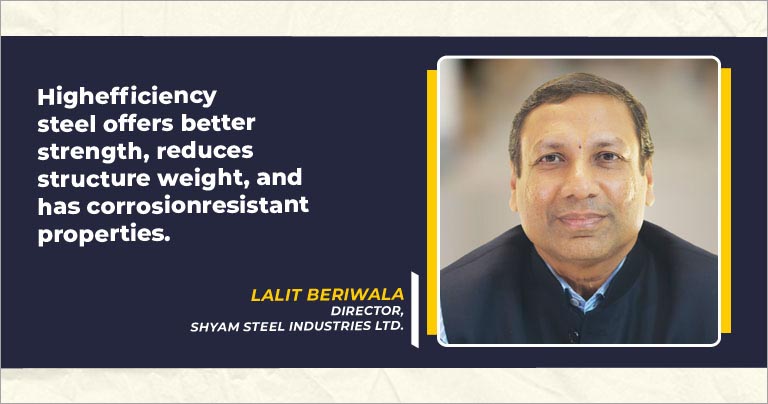
With a vision of sustainability for the growing steel demand, Shyam Steel talks about its optimistic views on overcoming the challenges and highlights the importance of high-efficiency steel.
Please explain why it is necessary to have high-efficiency steel grades in structures.
High-efficiency steel grades must be used in structures because they have an excellent strength-to-weight ratio, improved machinability, wear resistance, more toughness, superior ductility, and better weldability. Additionally, this steel is affordable and recyclable. A crucial aspect of using high-efficiency steel in structures is that it offers increased strength, improving the power of the materials while simultaneously reducing the self-weight of the structural parts. Also important to note is the widespread use of tubular profiles in various structural applications due to their excellent stiffness-to-weight ratio and torsion resistance. One of the main criteria for using high-efficiency steel grades in structures is the existence of corrosion-resistant properties with higher strength.
It has also been observed that material size can be reduced to the desired level using higher strengths, which facilitates cost reduction and helps reduce CO2 emissions.
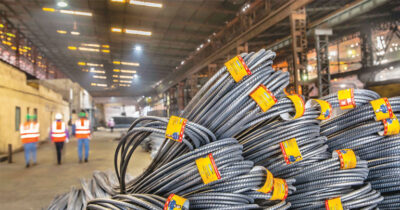
How are the present global trends affecting steel prices and their quality?
The construction boom typically slows in the May–July cycle, primarily for climatic reasons, so steel prices fluctuate in the market. The ongoing conflict between Russia and Ukraine, which is affecting the global supply chain, and the recent outbreak of the COVID-19 pandemic in China, Brazil, Germany, America, and other countries have both raised concerns for the steel industry as a whole as well as the current low point in global demand.
The cost of energy, strong domestic demand, the global economy’s health, business-friendly government regulations, and a well-developed, cost-effective logistic network with connections to the road, rail, and inland waterways are some factors that affect the price of steel. Steel quality depends on several factors, like customer care about product quality, whether they are buying on the domestic or foreign markets, so no steel manufacturer can afford to cut corners.
What amount of metal scrap and recycled steel is used in structures?
The use of the ” amount of metal scrap and recycled steel in structures” depends on various factors. It’s impacted by the availability of sufficient scrap (currently, India experiences a huge shortage in terms of scrap availability and is import-dependent), the cost-effectiveness of using scraps in the steel-making process, the presence of suitable technology in the plant, and the availability of technically qualified manpower in the plant etc.
In terms of charge-mix usage, angle channel and window section construction typically adhere to the following ratios:
Recycle scrap 40 percent, Metal scrap 30 percent, Sponge iron 30 percent
Recycle scrap 70 percent, Metal scrap 20 percent, Sponge iron 10 percent
Recycle scrap 30 percent, Metal scrap 20 percent, Sponge iron 50 percent
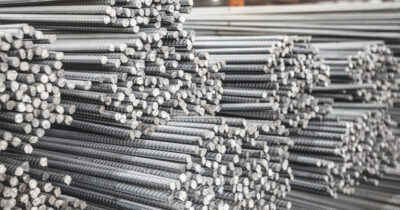
How are the global supply chain challenges adding fuel to the already existing difficulties of the steel business?
As already said, the steel industry faces multiple challenges now because of uncertainties in the global market, rising inflation, a fresh spurt of the COVID-19 pandemic, and a demand-supply mismatch. Besides, the rising fuel cost, like LDO, furnace oil, HSD, etc., is making the challenges more difficult.
How is your organisation contributing to the sustainability requirements of the construction infrastructure sector?
We are robust optimists and have confidence in ourselves. We look forward to meeting the challenges ahead in keeping with our vision of sustainable growth alongside the nation. We are committed to meeting national aspirations in all sectors of the economy where steel is required. We are also on fast-forward mode in terms of fuel transition, contribution to the target of 300 MT of steel production by 2030–31 as envisaged in the NSP 2017, customer satisfaction provided with excellence in product quality, technology upgradation, continuous R&D, and realisation of the objectives of the “Atmanirbhar Bharat Abhiyan” by making best use of the “Amrit Kaal” towards “India @ 100”.
For more details visit: https://shyamsteel.com/
Cookie Consent
We use cookies to personalize your experience. By continuing to visit this website you agree to our Terms & Conditions, Privacy Policy and Cookie Policy.



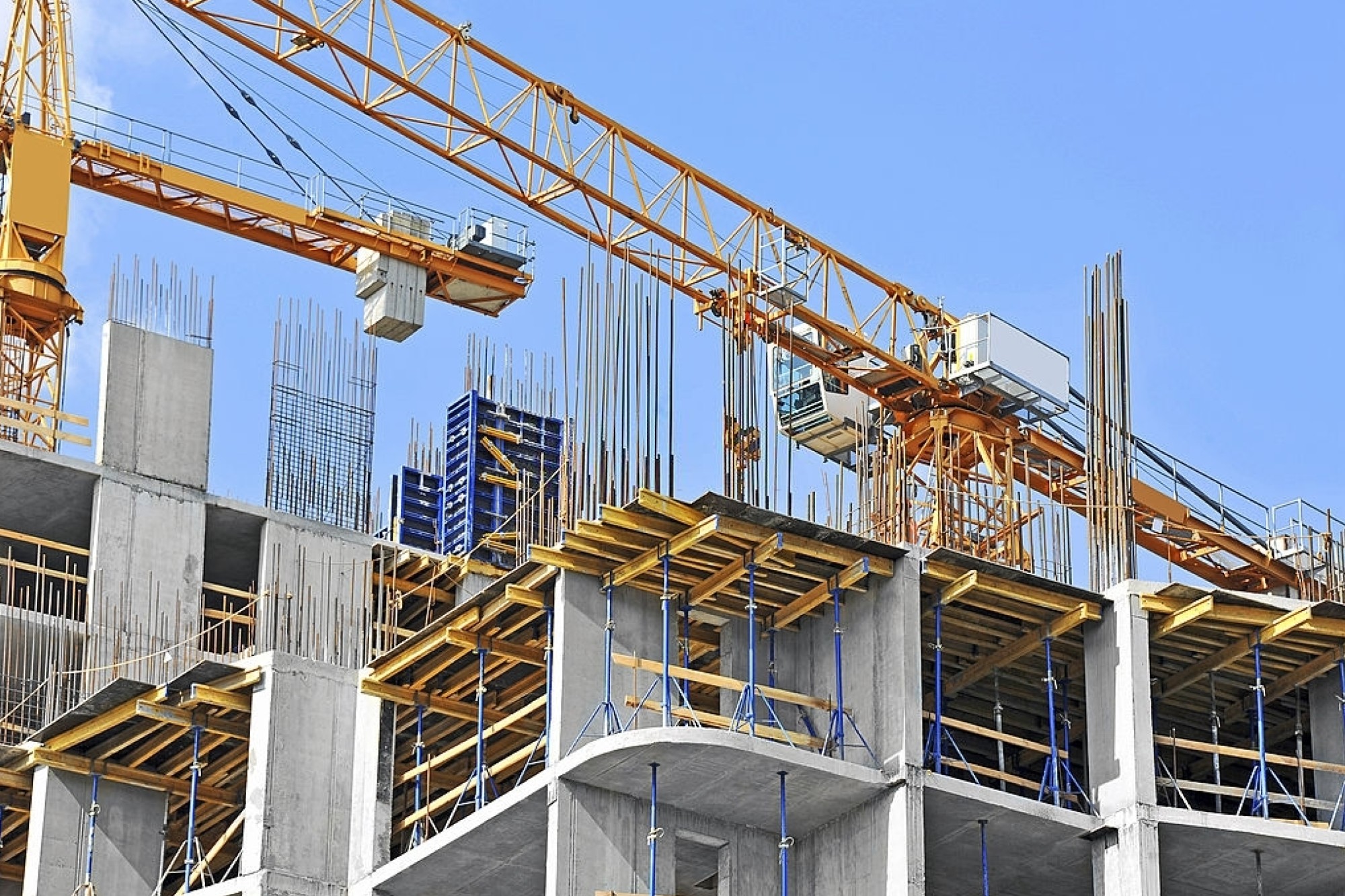

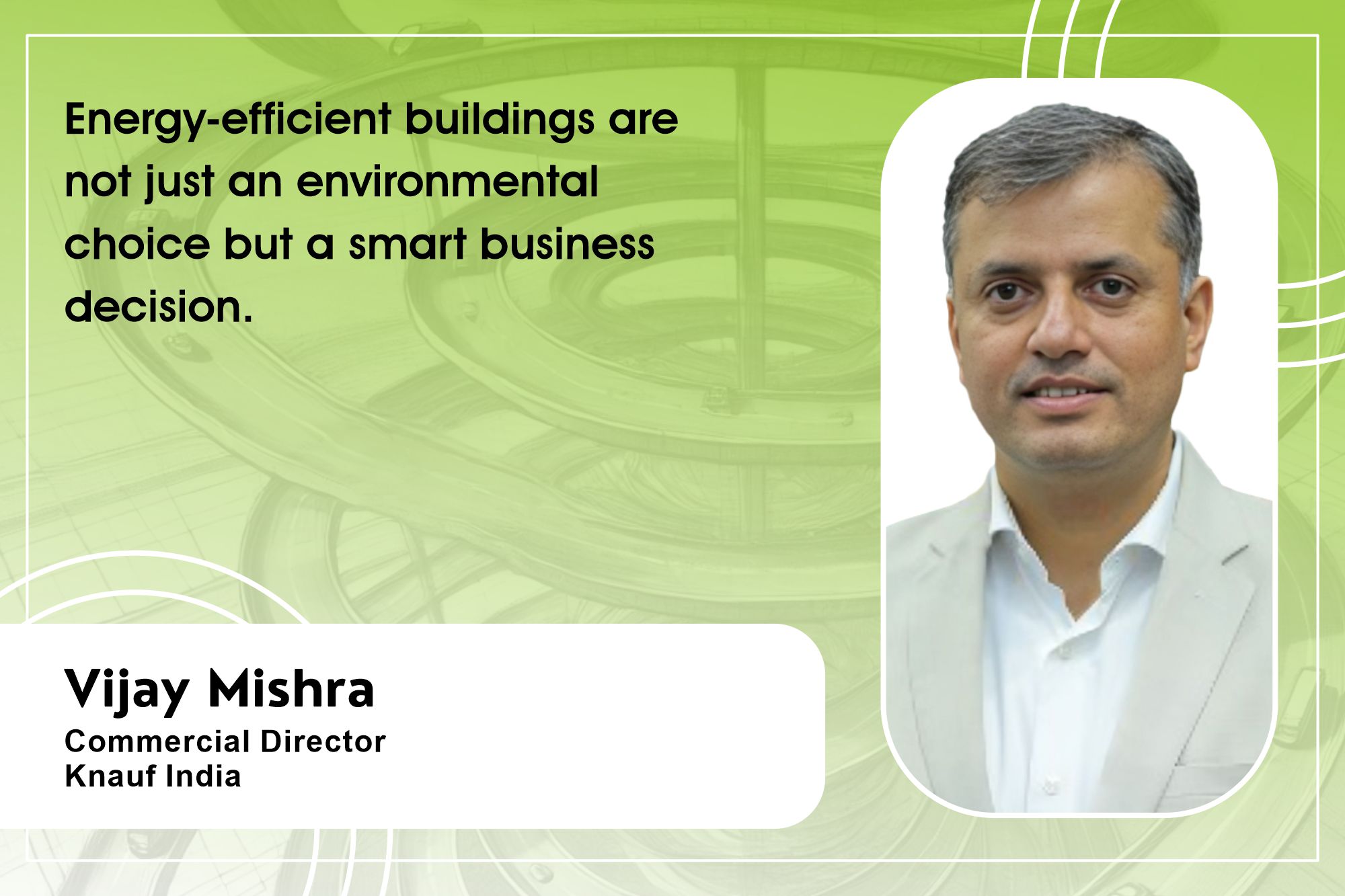





























-20240213125207.png)

























